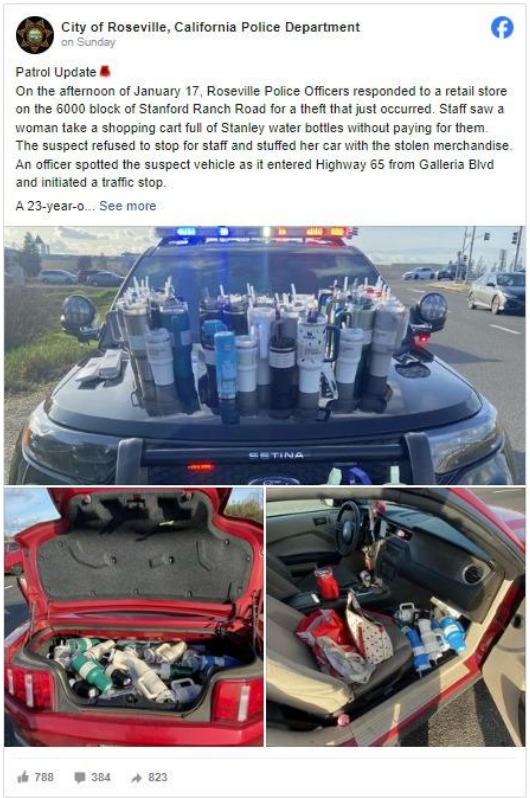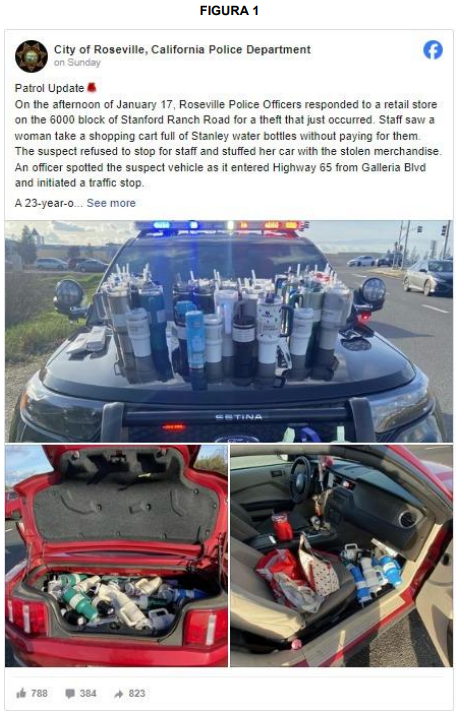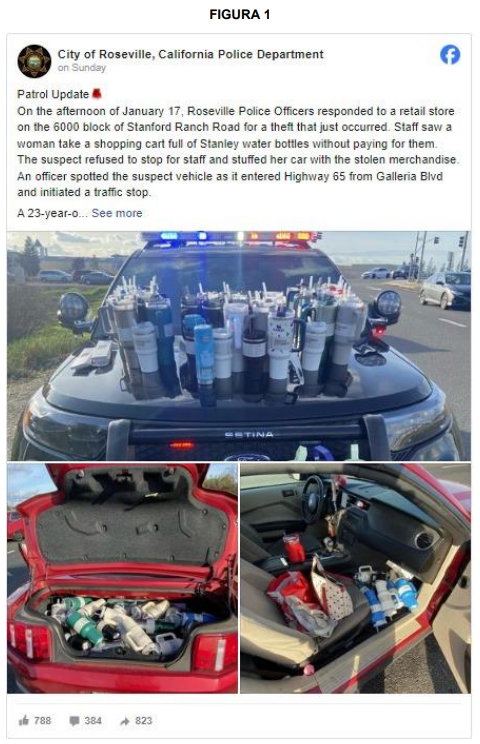Questões Militares
Comentadas sobre interpretação de texto | reading comprehension em inglês
Foram encontradas 1.404 questões
I. O texto menciona preocupações relativas à privacidade e à discriminação como fatores complicadores na adoção da tecnologia pela polícia.
II. De acordo com o texto, as tecnologias emergentes estão a fomentar uma escalada na incidência de atividades criminosas.
III. Os leitores de placa, entre outras tecnologias, são mencionados no texto como ferramentas que auxiliam a polícia na redução de ferimentos e lesões corporais.
IV. O texto menciona que o Departamento de Polícia de Houston aumentou o seu efetivo para enfrentar os desafios impostos pela tecnologia.
De acordo com o texto I, está CORRETO afirmar que:
“In a number-only count, the additional 500 thefts or homicides would result in the same overall number of crimes, yet clearly the impacts are disparate”.
I - It must be reliable.
II - It must be easily understandable by the public.
III - It must be democratic.
IV - It must be adopted at high cost to the harmful offenders.
According to the text I, which of the statements are NOT mentioned as a requirement for a legitimate measure of harm, according to Sherman, Neyroud, and Neyroud?
“I wanna leave my footprints on the sands of time” (l. 1) “Leave something to remember, so they won’t forget” (l. 5)
It’s possible to understand that



( ) one of them is afraid of death, the other treats the topic as ordinary.
( ) life’s unpredictability is seen as positive by one of the characters.
( ) according to the characters, life is more dangerous now than in the past.
( ) the man is skeptical whereas the duck is realistic.
( ) both characters are trying to cheer each other up.
Mark the correct option:

Check an event that is common for both texts:

Leia o texto e responda a questão.
Read the text and provide responses to question.
California woman arrested in theft of 65 Stanley cups - valued at nearly $2,500
By C Mandler
January 22, 2024 / 3:05 PM EST / CBS News
On Jan. 17, police in Roseville, California, discovered a 23-year-old woman had allegedly absconded with 65 Stanley cups from a nearby store — worth nearly $2,500.
"Staff saw a woman take a shopping cart full of Stanley water bottles without paying for them," said the Roseville Police Department in a statement on Facebook.
After being confronted by retail staff, the woman refused to stop, stuffing the cups into her car. She was subsequently arrested on a charge of grand theft and has yet to be identified by officers.
"While Stanley Quenchers are all the rage, we strongly advise against turning to crime to fulfill your hydration habits," said the Roseville police.
One commenter on the post pointed out that in addition to the trove of cups in the trunk and front seat, there was also a bright red Stanley cup in the cup holder, which they hoped police also confiscated. Colorful Stanley cups caused consumer mayhem earlier this month when the brand dropped a limited-edition batch of Valentine's Day colors of the popular tumbler at in-Target Starbucks locations.
Viral video showed shoppers running toward displays of the cups, as well as long lines of consumers waiting to get their hands on one of the coveted Quenchers.
https://www.cbsnews.com/news/stanley-cups-theft-california-target-2500-65/ (First published on January 22, 2024 /3:05PM EST)
C Mandler is a social media producer and trending topics writer for CBS News, focusing on American politics and LGBTQ+ issues.
FIGURA 1

Fonte: CBS NEWS, 2024.
Leia o texto e responda a questão.
Read the text and provide responses to question.
California woman arrested in theft of 65 Stanley cups - valued at nearly $2,500
By C Mandler
January 22, 2024 / 3:05 PM EST / CBS News
On Jan. 17, police in Roseville, California, discovered a 23-year-old woman had allegedly absconded with 65 Stanley cups from a nearby store — worth nearly $2,500.
"Staff saw a woman take a shopping cart full of Stanley water bottles without paying for them," said the Roseville Police Department in a statement on Facebook.
After being confronted by retail staff, the woman refused to stop, stuffing the cups into her car. She was subsequently arrested on a charge of grand theft and has yet to be identified by officers.
"While Stanley Quenchers are all the rage, we strongly advise against turning to crime to fulfill your hydration habits," said the Roseville police.
One commenter on the post pointed out that in addition to the trove of cups in the trunk and front seat, there was also a bright red Stanley cup in the cup holder, which they hoped police also confiscated. Colorful Stanley cups caused consumer mayhem earlier this month when the brand dropped a limited-edition batch of Valentine's Day colors of the popular tumbler at in-Target Starbucks locations.
Viral video showed shoppers running toward displays of the cups, as well as long lines of consumers waiting to get their hands on one of the coveted Quenchers.
https://www.cbsnews.com/news/stanley-cups-theft-california-target-2500-65/ (First published on January 22, 2024 /3:05PM EST)
C Mandler is a social media producer and trending topics writer for CBS News, focusing on American politics and LGBTQ+ issues.
FIGURA 1

Fonte: CBS NEWS, 2024.
Leia o texto e responda a questão.
Read the text and provide response to question.
California woman arrested in theft of 65 Stanley cups - valued at nearly $2,500
By C Mandler
January 22, 2024 / 3:05 PM EST / CBS News
On Jan. 17, police in Roseville, California, discovered a 23-year-old woman had allegedly absconded with 65 Stanley cups from a nearby store — worth nearly $2,500.
"Staff saw a woman take a shopping cart full of Stanley water bottles without paying for them," said the Roseville Police Department in a statement on Facebook.
After being confronted by retail staff, the woman refused to stop, stuffing the cups into her car. She was subsequently arrested on a charge of grand theft and has yet to be identified by officers.
"While Stanley Quenchers are all the rage, we strongly advise against turning to crime to fulfill your hydration habits," said the Roseville police.
One commenter on the post pointed out that in addition to the trove of cups in the trunk and front seat, there was also a bright red Stanley cup in the cup holder, which they hoped police also confiscated. Colorful Stanley cups caused consumer mayhem earlier this month when the brand dropped a limited-edition batch of Valentine's Day colors of the popular tumbler at in-Target Starbucks locations.
Viral video showed shoppers running toward displays of the cups, as well as long lines of consumers waiting to get their hands on one of the coveted Quenchers.
https://www.cbsnews.com/news/stanley-cups-theft-california-target-2500-65/ (First published on January 22, 2024 /3:05PM EST)
C Mandler is a social media producer and trending topics writer for CBS News, focusing on American politics and LGBTQ+ issues.
FIGURA 1

Fonte: CBS NEWS, 2024.




